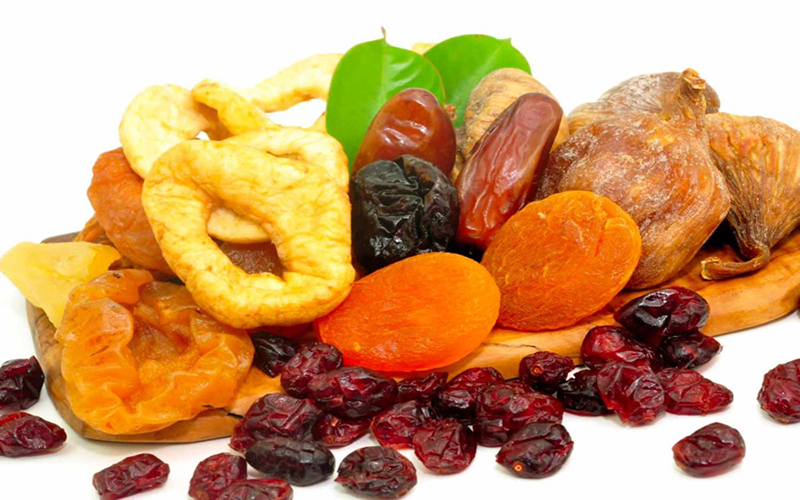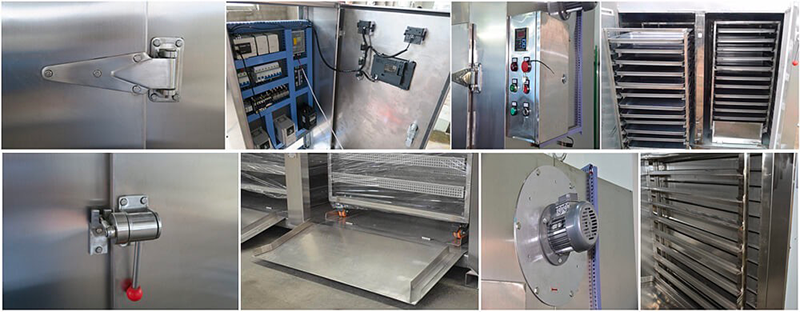
Content Menu
● Understanding Food Dehydrators
● Types of Food Dehydrators
● Benefits of Using Food Dehydrators
● How Do Food Dehydrators Work?
● Common Issues with AEG Heat Pump Dryers
>> 1. Clogged Filters
>> 2. Blocked Condenser
>> 3. Incorrect Settings
>> 4. Ambient Temperature
>> 5. Overloading
● Maintenance Tips for AEG Heat Pump Dryers
● Enhancing Drying Efficiency
● Conclusion
● FAQs
>> 1. What is a food dehydrator?
>> 2. How does a heat pump dryer differ from other types?
>> 3. Can I dehydrate meat using a dehydrator?
>> 4. How long does it take to dehydrate fruits?
>> 5. Are there any foods that should not be dehydrated?
● Citations:
Food dehydrators are essential tools in the food processing industry, allowing for the preservation and enhancement of various food products. This article will delve into the workings of food dehydrators, their types, benefits, and how to troubleshoot common issues, particularly focusing on heat pump dryers.

Understanding Food Dehydrators
A food dehydrator is an electrical appliance designed to remove moisture from food items, thereby prolonging their shelf life and preserving their nutritional value. The dehydration process involves several key components:
- Heating Elements: These raise the temperature inside the dehydrator, facilitating moisture removal.
- Trays: These hold the food items being dehydrated.
- Fans: These circulate hot air throughout the dehydrator to ensure even drying.
- Vents: These allow moisture-laden air to escape, preventing reabsorption by the food.
The combination of these components creates an environment where moisture is effectively removed, leading to dried foods that maintain their flavor and nutrients.
Types of Food Dehydrators
Food dehydrators come in various types, each suitable for different applications and scales of operation:
- Hot Air Dryers: These are the most common type, using heated air to remove moisture. They can be further categorized into:
- Cabinet Dryers: Suitable for small to medium production volumes.
- Tunnel Dryers: Ideal for large-scale operations with uniform drying needs.
- Rotary Dryers: Designed for specific products requiring gentle handling.
- Microwave Dryers: Utilize microwave radiation to evaporate moisture quickly. They are less common due to high operational costs.
- Freeze Dryers: Preserve food quality by freezing it first and then reducing pressure to allow the ice to sublimate directly into vapor.
- Solar Dryers: Use sunlight as a heat source but are limited by weather conditions and geographical location.
Benefits of Using Food Dehydrators
Utilizing a food dehydrator offers numerous advantages:
- Nutrient Preservation: Unlike canning or freezing, dehydration retains most vitamins and minerals in fruits and vegetables.
- Long Shelf Life: Dried foods can last significantly longer than fresh produce, making them ideal for storage and emergency supplies.
- Cost-Effectiveness: Buying produce in bulk when in season and dehydrating it can save money compared to purchasing processed foods.
- Healthy Snacking: Dried fruits and vegetables are nutritious snacks free from preservatives and added sugars.
- Versatility: Beyond fruits and vegetables, dehydrators can be used for making jerky, fruit leathers, dried herbs, and pet treats.

How Do Food Dehydrators Work?
The drying process in a food dehydrator involves several stages:
1. Heating: The heating element raises the internal temperature, which helps evaporate moisture from the food.
2. Air Circulation: Fans circulate hot air around the trays, promoting even drying.
3. Moisture Removal: As moisture evaporates from the food, it is carried away by the airflow through vents.
4. Cooling Down: Once the desired level of dehydration is achieved, the machine cools down before being opened to prevent condensation on the dried products.
Common Issues with AEG Heat Pump Dryers
If your AEG heat pump dryer is not drying properly, it may be due to several common issues:
1. Clogged Filters
Dirty filters can restrict airflow, causing poor drying performance. Regularly clean the lint filter after each use to ensure optimal airflow. Additionally, check for any other filters that may need cleaning or replacement according to your model's specifications.
2. Blocked Condenser
A dirty condenser can prevent proper heat exchange. Cleaning the condenser regularly will help maintain efficient operation. Make sure to consult your user manual for specific instructions on how to access and clean the condenser unit safely.
3. Incorrect Settings
Ensure that you have selected the appropriate drying cycle for your load type. For heavy items or larger loads, consider using a longer drying cycle or adjusting the dryness level settings. Familiarize yourself with your dryer's various programs—some models offer specific settings for different fabric types or load sizes.
4. Ambient Temperature
The dryer operates best in environments with temperatures between 19°C and 24°C (66°F - 75°F). If your laundry area is too cold or too hot, it may affect drying efficiency. Ensure that your dryer is placed in a well-ventilated area away from direct sunlight or extreme cold drafts.
5. Overloading
Avoid overloading your dryer as this can impede airflow and lead to uneven drying results. It's important to follow manufacturer guidelines regarding load size; generally, it's best to leave some space between items for optimal air circulation.
Maintenance Tips for AEG Heat Pump Dryers
To ensure your AEG heat pump dryer operates efficiently over time, regular maintenance is crucial:
- Regular Cleaning: Clean lint filters after every use and periodically check for blockages in ducts or vents.
- Scheduled Servicing: Consider scheduling professional servicing at least once a year to inspect internal components like fans and heating elements.
- Monitor Performance: Keep an eye on your dryer's performance; if you notice any changes in efficiency or unusual noises, address them promptly before they escalate into bigger problems.
Enhancing Drying Efficiency
To further improve drying efficiency in your AEG heat pump dryer:
- Use dryer balls made of wool or rubber; they help separate clothes during drying which allows hot air to circulate better.
- Avoid washing overly wet items; wring them out before placing them in the dryer if possible.
- Sort laundry by fabric type; heavier items like towels should be dried separately from lighter fabrics like t-shirts for better results.
Conclusion
Food dehydrators play a crucial role in food preservation by efficiently removing moisture while retaining nutritional value. Understanding how they work, their benefits, troubleshooting common issues with appliances like AEG heat pump dryers, and maintaining them properly can significantly enhance your experience with these machines. Whether you are in a commercial setting or using a home dehydrator, maintaining proper operation is key to achieving high-quality dried products.

FAQs
1. What is a food dehydrator?
A food dehydrator is an appliance designed to remove moisture from food items using heat and airflow, prolonging shelf life while preserving nutrients.
2. How does a heat pump dryer differ from other types?
Heat pump dryers recycle air within the unit, making them more energy-efficient compared to traditional dryers that vent hot air outside.
3. Can I dehydrate meat using a dehydrator?
Yes, many dehydrators are suitable for making jerky or dried meats as long as they reach safe temperatures during processing.
4. How long does it take to dehydrate fruits?
Dehydration times vary based on fruit type and thickness but generally range from 6 to 12 hours at temperatures between 50°C - 70°C (122°F - 158°F).
5. Are there any foods that should not be dehydrated?
Foods with high-fat content like avocados or mayonnaise should not be dehydrated as they can become rancid over time when stored dry.
Citations:
[1] https://aradmachineryco.com/article/Food-dehydrator-buying-guide
[2] https://www.youtube.com/watch?v=A5Nf2P7-nbU
[3] https://pocketchangegourmet.com/how-does-a-dehydrator-work/
[4] https://etsolutions.in/how-does-a-food-dehydrator-work-explore-the-benefits-of-food-dehydrators/
[5] https://airtekdehydrator.com
[6] https://www.coolblue.nl/en/advice/the-most-common-errors-on-aeg-dryers.html
[7] https://www.youtube.com/watch?v=lW7ibW1R3Ok
[8] https://www.aeg.co.uk/support/support-articles/laundry/dryers/
[9] https://aradmachineryco.com/article/How-to-use-a-dehydratormachine
[10] https://www.aeg.co.uk/support/support-articles/laundry/dryers/tumble-dryer-not-drying-not-drying-properly-too-long-drying/











